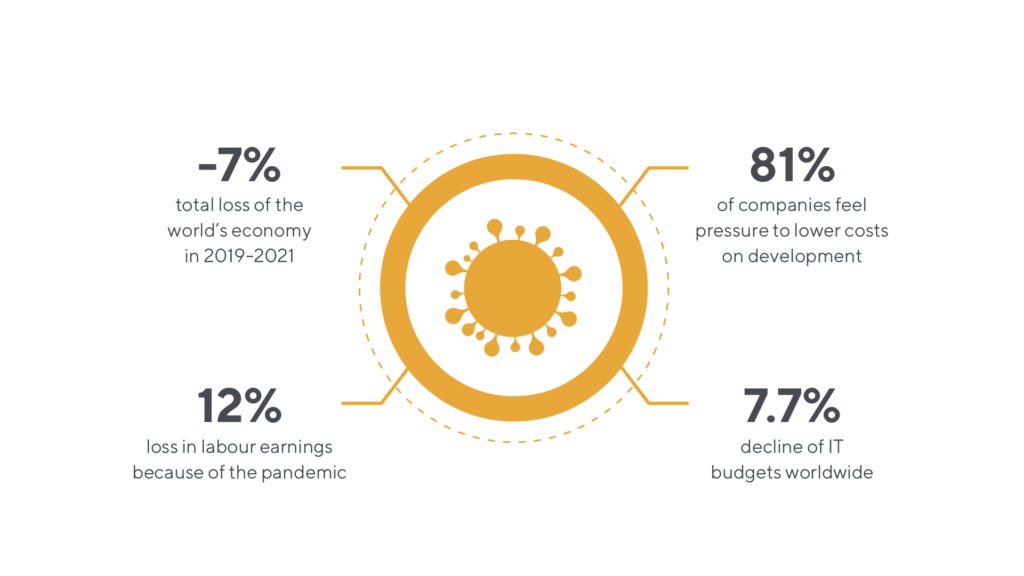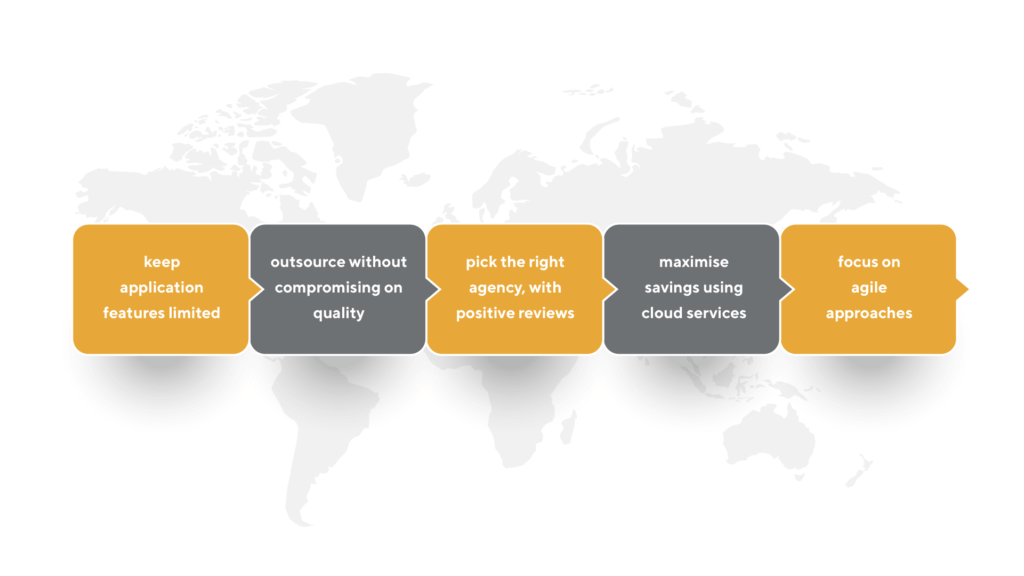Business leaders have never been under so much pressure to save money, cut costs and maximize spending and investment opportunities. Getting an app developed is a serious commitment of time and money, and numerous key objectives are tied to the success of launching an app.
According to Akis Sklavounakis, Senior Director Analyst at Gartner, “investment in new application development is 17% of the total IT spend”, for mid-size and larger organizations.
Even with thousands of SaaS solutions on the market, many companies need apps custom made. And for smaller companies and startups, investing in app development is a serious commitment. You need to make the right choice when it comes to which firm develops an app, the features you need, and outcomes you expect.
If there are ways to save money, then these are always worth exploring. Providing corners aren’t cut. Developing an app no one wants to download, use or pay for is not worth the investment. Such a project would either need scrapping entirely or re-developing, which would cost even more.
In this article, we take a look at why the pandemic has impacted development budgets, and how companies can save money when having an app created.
Why has the Covid-19 pandemic affected app budgets?
Around the world, the Covid-19 pandemic has caused significant economic damage. Not only has there been serious loss of life, with some countries and regions affected worse than others; there are ongoing social, mental health, travel, cultural and economic costs.
Based on the IMF’s latest World Economic Outlook (WEO April 2021) study, the recession this pandemic has caused is the deepest since the end of World War II, in 1945. Although America led the world out of that recession, this one is far deeper and more structurally profound than one country or global organisation — such as the IMF — can cope with.
Every country and region has responded differently. In countries where the virus hasn’t caused as much damage — usually where government policies and health and social policies have been more effective — the economic consequences haven’t been as damaging. Developing countries and regions are going to take longer to recover from this.
Globally, IMF figures show that there was a 3.5% output contraction in 2020. If the pandemic hadn’t happened, then the IMF was projecting 3.4% annual growth last year, which represents a total loss of -7% of the world’s economy.
Not only that, but when everything is factored in — job loss, business going under, loss of life, psychological impact — and numerous other issues, the IMF estimates that the “cost of the pandemic, roughly equal to 100% of global GDP in 2019, should be regarded as a fairly conservative lower bound.”
So when we think of that on a smaller scale, such as a company needing an app developed, we can be forgiven for wondering why some clients can’t afford pre-pandemic budgets. In which case, it’s helpful to understand ways apps can be developed more cost effectively.

Picture 1. COVID-19 and app budgets.
How to reduce application development costs?
One of the most effective ways that generate real results quickly is to look beyond your immediate area, country or even region for app development. If you are based in the US, UK, EU or similar countries, it might be tempting to stay local. However, that is always going to cost more. Developer and software engineer salaries, especially in senior roles can be in the 6-figures in most developed economies.
Whereas, the pandemic has shown that remote work and working from anywhere is possible. So if outsourcing, and certainly international outsourcing is a new concept, then it’s time to go further afield. When it comes to app development, Ukraine is one of the best choices to source suppliers. Costs are lower than in the US, UK, and EU.
Quality is just as high, with Ukrainian firms being used as outsourced extensions of in-house teams, to full-service software and application development service providers. This fits in with the “talent anywhere” approach business and IT leaders are taking in the post-pandemic world.
Businesses are also accelerating agile and cloud-based development plans. Especially when legacy infrastructure still plays a role in the architecture of IT systems. Outsourced development and using a range of cloud-based provisions, such as SaaS, IaaS and PaaS have been proven to reduce costs, especially when it comes to application development.
Another guaranteed way to reduce costs is keep application features limited, at first. As you add more features to the project scope, the cost increases. When initially getting an app developed — in Beta — aim for market-ready rather than all of the bells and whistles. Add more features later once you’ve got traction, and hitting growth and revenue goals.
Key Takeaways: Reduce App Development Costs
Outsource and take a “talent anywhere approach”, without compromising on quality. Web and mobile development agencies in Ukraine and other Central & Eastern European (CEE) countries are more cost effective, while being very experienced developing apps for companies in the US, UK, EU and around the world.
Focus on ensuring quality is high, which means picking the right agency, with positive reviews and client case studies. Investing in the right provider at this stage generates positive long-term outcomes and an ROI.
When budgets are tighter, aim to maximise savings using cloud services and agile approaches, and keep initial feature outputs to a minimum.

Picture 2. App development costs reducing: takeaways.
LaSoft: Your web and mobile development agency. We are a technology partner you can trust. Get more information today. LaSoft provides a wide range of services, including web and mobile development, product design, management and quality assurance.


